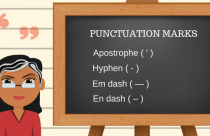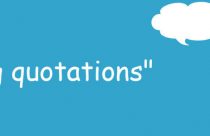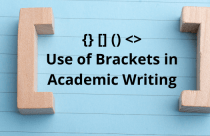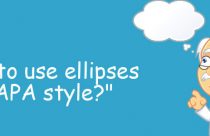Importance of Punctuation in Research Papers (Part 2)
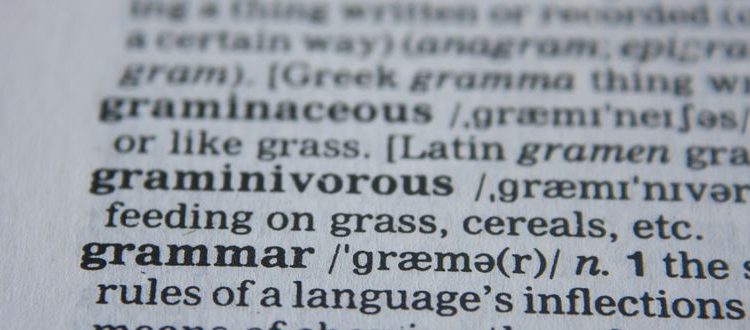
As we saw in the first article of this series, punctuation is important because it helps your reader understand the writing clearly. Research papers often contain complex ideas and long sentences. Hence, proper punctuation within these sentences is very important. It helps to strengthen your arguments and remove any potential confusion your readers may have. These days you can easily check your writing for punctuation errors and correct them using online grammar checker tools. However, if you need expert assistance in academic writing, Trinka is the right tool for you. This AI-powered language enhancement tool is custom built for academic and technical writing, making writing a stress-free task!
In this article, we will discuss some more about punctuation in research papers and review some common punctuation marks: the semicolon, the colon, and quotation marks.
When Do We Use a Semicolon?
- Linking two independent but related clauses – Semicolons (;) link two independent clauses. An independent clause means the clause could be a standalone or complete sentence. These clauses should each contain closely related ideas. For example:
It rained all day; we were cold, wet, and miserable standing outside.
In this sentence, the two parts that are separated by a semicolon could each be a separate sentence. For example:
It rained all day. We were cold, wet, and miserable standing outside.
These two clauses are also closely related to one another–presumably, the people in this sentence were “cold, wet, and miserable” standing outside due to the rain. How about this example?
It rained all day; I thought about having chicken for dinner.
While these clauses are also independent, the two ideas aren’t really related. Generally, the weather doesn’t impact our choice of “dinner”. It would be inappropriate to use a semicolon in this case.
Use a semicolon to join two independent clauses when the second clause begins with a conjunctive adverb (however, therefore, moreover, furthermore, thus, meanwhile, nonetheless, otherwise) or a transition word (in fact, for example, that is, for instance, in addition, in other words, on the other hand, even so).
Our results indicated a correlation; however, the correlation was weak.
- Separating items in a list that also contain commas – Semicolons can separate items in a list that also require a comma. Let’s look at the following example:
The conference was attended by Senator McCaskill, Finance Committee Chair; Senator McConnell, Party Whip; and Mr. Ivan McGregor, a lobbyist from the telecommunications industry.
Here a semicolon separates the names in this list because the names are followed by commas to indicate each person’s job description. How about this sentence?
The plants can be found in Michigan; Illinois; and New Jersey.
This example is incorrect because the sentence does not contain any commas separating the items in the list. How could we fix it?
The plants can be found in Detroit, Michigan; Champagne, Illinois; and Trenton, New Jersey.
When Do We Use a Colon?
- While a semicolon separates two independent clauses, a colon is used after an independent clause to elaborate, emphasize, or explain a statement. For example:
Scientists remain puzzled by this outcome: prior research suggested that it should have been impossible.
Note that the distinction here between a semicolon and a colon is a bit confusing. One good way to remember the difference is that in the above example, the use of a colon emphasizes the second clause. In our previous example of “It rained all day; we were cold, wet, and miserable standing outside”, our “cold, wet and miserable” condition is closely related to the “rain”, but the two parts of the sentence have equal emphasis. In other words, if you wish to emphasize the second clause, use a colon. If you want the two clauses to have equal weightage, use a semicolon.
- A colon introduces a list or series. For example:
In this paper we examine four major concepts: agenda setting, problem definition, collaborative problem-solving, and policy design.
- A colon introduces quotations. For example:
In her impassioned speech before the court, Mrs. Ginsburg argued that sex, just like race, was an intrinsic and unchangeable quality and should therefore be treated the same in discrimination cases: “Just as I cannot change my race, and it is apparent to everyone around me, I cannot change my sex, and it is a primary identifying characteristic. If the court has established that race is not to be discriminated on these grounds, why is sex any different?”
When Do We Use Quotation Marks?
- Quotation marks are used for text that is directly quoted. Note that quotation marks should be placed outside of periods and commas when quoting directly. For example:
According to Johnston, “Cats that are not fed once every three hours may exhibit needy behavior.”
- Quotation marks emphasize unusual, self-made, unfamiliar, or slang terms. For example:
People say that women who do not marry up to the age of 40 are “old maids.”
- Single quotation marks are used for putting quotes within quotes. For example:
According to Keystone, “Members of Parliament were reluctant to disclose instances of accepting bribes, stating ‘we cannot be certain which payments were legitimate and which were not’.”
Note that quotation marks should not be used for ordinary emphasis on words. For example:
Incorrect: Our market sells fresh “corn.” (misplaced emphasis)
Correct: The New York Times said that our corn is “the freshest in town.” (direct quote)
In this article, we discussed the punctuation marks such as semicolon, colon and quotation marks. In the next article of the series, we would be discussing some more punctuation marks such as apostrophe, and confusion between hyphen, em dash and en dash.
Do you know Trinka can help you avoid all such confusion and errors? It is a one-stop solution for all your grammar and language enhancement requirements. Apart from punctuation corrections, Trinka enhances your writing for vocabulary, tone, syntax, and much more. Try it out today, it’s free!
What are the other punctuation marks in research papers that challenge you? Do you have more questions about semicolons, colons, and quotation marks? Please share your thoughts with us in the comments section below.







